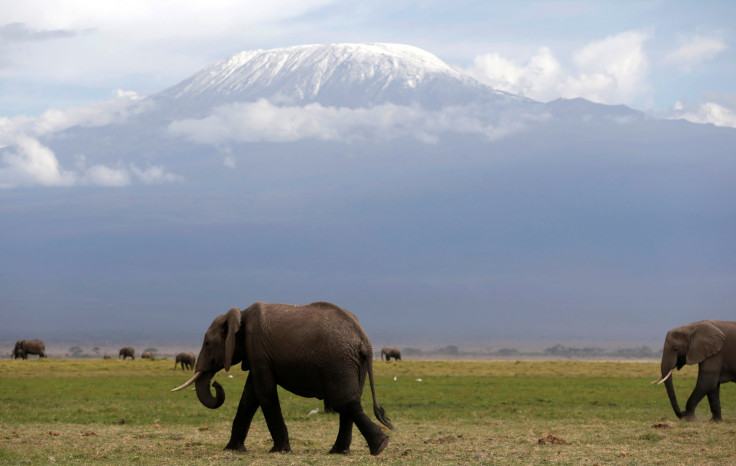Poaching Fears Making African Elephants Nocturnal, Study Finds

Insofar as nocturnal species go, the list has very few large mammals that include most big cat species, some primates, hyenas, and the black rhinoceros. African elephants, however, which are the largest living land animals, are not creatures of the night. But that may be changing, a new study has found.
The threat of poaching for ivory from their tusks is the single biggest risk to the existence of elephants, and its fear seem to be driving these highly intelligent animals to change their habits, according to a study conducted jointly by nonprofit Save the Elephants, University of Twente (UT) in the Netherlands, the University of Oxford and Kenya Wildlife Service.
Researchers looked at data collected over 10 years, between 2002 and 2012, that tracked the speeds of movement of elephants during daytime and nighttime, as well as mortality data, in the Laikipia-Samburu ecosystem of northern Kenya. They found “that elephants move more at night in areas that suffer high levels of poaching, turning to feeding and travelling instead of sleeping,” according to a statement on the UT website.
“This study shows the adaptability of Earth’s largest land mammal to adapt their behavior flexibly in order to stay safe,” Save the Elephants’ founder Iain Douglas-Hamilton said in the statement. “This alteration in movement behavior by elephants has implications for their foraging strategy, reproduction and survival, which are not yet fully understood.”
An example cited in the study to display the animals’ intelligence was that of Morgan, a bull elephant in a different location in Kenya who was moving toward the war-torn nation of Somalia. As he approached the Somali border, Morgan was observed to increase his nighttime activity while hiding in the cover of thick bush during the day.
A total of 60 elephants — 28 females and 32 males — were tracked using GPS collars for the study, with the tracking period for any given individual ranging from a few months to over three years. The first phase of the study lasted from 2002 to 2009, when poaching in Kenya was moderate. The second phase was from 2010 to 2012, when the country saw its worst time in terms of poaching activity, with about 40,000 elephants being killed during those three years.
“Both male and female elephants moved more at night than during the day where and when poaching levels were high. The relationship between poaching levels and night-day speed ratios was stronger for females than for males. We concluded that the variation in the night-day speed ratio of elephants might be used as an effective indicator for changes poaching levels on a near real-time basis,” the researchers wrote in the study.
Festus Ihwagi, senior research scientist at Save the Elephants and a PhD student at UT, was the lead author of the study. In the statement, he said: “The escalation of poaching has become the greatest immediate threat to the survival of elephants. As most poaching occurs during the daytime, their transition to nocturnal behaviour appears to be a direct result of the prevailing poaching levels.”
Titled:“Night-day speed ratio of elephants as indicator of poaching levels,” the study appeared in the journal Ecological Indicators.
© Copyright IBTimes 2025. All rights reserved.




















